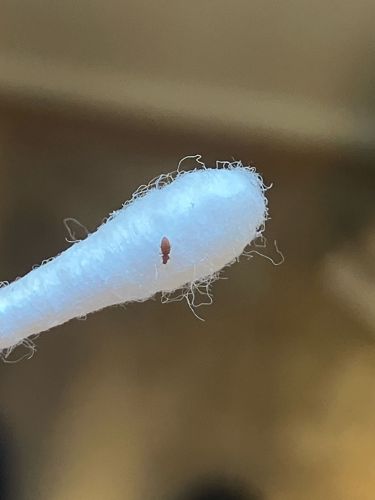Springtail
Scientific Name: "Collembola (various genera and species)"
Order & Family: Collembola (an order, not an insect, but a related hexapod); various families like Sminthuridae or Entomobryidae.
Size: 0.2 mm to 10 mm, with many common species being 1-3 mm.

Natural Habitat
Typically found in moist environments with decaying organic matter, such as soil, leaf litter, rotting wood, under bark, in compost piles, and sometimes indoors in damp areas like bathrooms or basements.
Diet & Feeding
Primarily feed on decaying vegetation, fungi, bacteria, algae, and sometimes other microorganisms. Some species may also consume pollen or detritus.
Behavior Patterns
Known for their ability to jump using a "furcula," a tail-like appendage tucked under their abdomen. They are generally harmless and active in maintaining soil health. Many species are gregarious.
Risks & Benefits
Benefits: Important decomposers, contributing to nutrient cycling and soil aeration. Risks: Generally harmless to humans, pets, and plants. They are not known to transmit diseases or cause damage to structures. Occasionally, large populations in homes can be a nuisance, but they typically indicate high humidity or mold issues.
Identified on: 10/27/2025